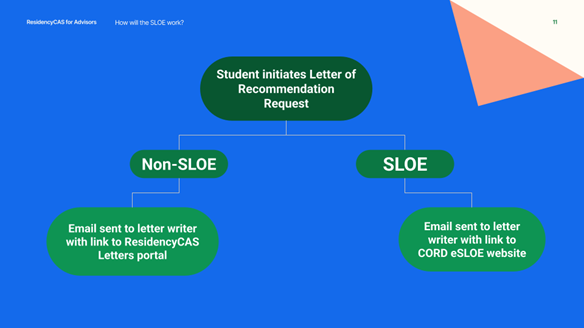Transistion to ResidencyCAS 2025
Zoee Castro, MSIV
University of Nevada, Reno School of Medicine
EMRA MSC Chair 2025
Tim Fallon, MD - Chair
Erin McDonough, MD - Vice Chair
Liza Smith, MD & Elizabeth Barrall Werley, MD - Past Chairs
Alexis Peletier-Bui, MD - CORD Board Liaison
CORD Application Process Improvement Committee (APIC)
On October 8, 2024, the Council of Residency Directors in Emergency Medicine (CORD) announced a partnership with ResidencyCAS, a product of Liaison International, to develop an application tailored for the specialty of Emergency Medicine. OB/GYN had a successful transition to ResidencyCAS for this current application cycle; EM’s transition to ResidencyCAS for the 2025 – 2026 application cycle was confirmed at the CORD Academic Assembly that occurred in March of this year. This transition represents almost two years of behind-the-scenes work by medical educators in EM and was motivated by a desire to streamline technology to improve efficiency and enhance holistic application review, reduce costs for medical students, allow specialty-specific customization, and have ownership of and access to specialty-wide application data. As students prepare for this change, the EMRA Medical Student Council is proud to be partnering with CORD to help aid students with this transition. This collaboration will include:
- Monthly updates from CORD to be included in the Medical Student Newsletter
- EMRA Hangout events specific to ResidencyCAS
- Updated Student Advising Guide that is currently being worked on with collaboration from both EMRA and CORD. The anticipated electronic release is planned for later this month!
As upcoming applicants prepare for this transition, EMRA was able to get these updates and answers to student submitted questions regarding ResidencyCAS below. If you have additional questions, please submit them here!
- When can students begin to access ResidencyCAS? Are there any confirmed dates of when applications will open and will be due?
The application sandbox is already available. This is a practice environment, to be used for applicants to familiarize themselves with the overall application, meaning any information entered into this environment will not transfer over into the real application.
Students can create an account directly here (no need for a secure access link/“token” from a medical school) and browse the application.
As of now, students should be aware that ResidencyCAS will be opening to applicants June 4, 2025. Applications will be due by September 25, 2025. - Will ResidencyCAS be used for students dual applying to EM/IM, EM/Peds, etc.?
That is the goal. We intend to have 100% of EM programs as well as all of the dual EM programs using ResidencyCAS for the 2025-26 season. We had dual training representation on our ResidencyCAS advisory committee and worked hard to troubleshoot any anticipated barriers to the transition for these programs and their applicants. In addition to what we believe is a more facile and cost-effective application platform, ResidencyCAS has committed to a fee structure advantageous for applicants applying to dual EM programs. - Are there any new or drastic changes you think students should anticipate when using ResidencyCAS this year? Will geographic preferences (“geo signaling”) remain on the application?
Nothing drastic. Overall, there are only so many ways to enter demographic and CV data. The ResidencyCAS platform is easier to use, is compatible across browsers and smart devices, and should minimize the number of tech platforms applicants need to interface with to get through the different phases of the application cycle.
EM has made a few alterations to the application from the current system with the end goal of simplifying the application process for applicants and the review process for programs. One example is eliminating Geographic Preferences (GP), a section often misunderstood by applicants and programs. We have two years of data now showing that GP unintentionally disadvantages large groups of students. This unintended harm combined with the criticisms over the census map contributed to our removing it from the ResidencyCAS application. Instead, the ResidencyCAS application will have a Geographic Connections section that permits applicants to optionally select up to three city/state combinations with which they may hold any geographic tie - which could be a hometown, permanent address, a geographic area pertaining to a significant other, or just a strong desire to move to a new location. Applicants will also be able to provide an optional very brief explanation of why they have identified each Geographic Connection.
One other thing that will be a little different is that when applicants request a letter of evaluation, they will need to delineate whether that letter is a SLOE (of any type) or not (a standard narrative letter of recommendation). They don’t need to know what kind of SLOE, just that they are asking for a SLOE of some sort [the letter request the letter writer receives is different depending on whether the requested letter is a SLOE or a narrative letter] Letter requests will be created by applicants within the ResidencyCAS application portal.
- How many signals will applicants be given?
The only change to program signaling through this transition is that it will be hosted by ResidencyCAS rather than by ERAS. The number of signals applicants will receive remains stable at five, with continued advice not to signal home/away rotations given their typical high yield in terms of interview offers. - Is there an estimated cost breakdown for applicants using ResidencyCAS this upcoming application cycle?
ResidencyCAS is about 20% less expensive than ERAS’s updated costs.
Tiered pricing:
$99 for 1-18 programs
19-30: $18/program
31+: $23/program
- ResidencyCAS would be $683 for 46 applications (the average # of applications from last cycle)
- ERAS would be $810 for 46 apps under their new cost structure
- ResidencyCAS has a fee assistance program, granting reduced fees for Pell grant recipients, similar to that provided by ERAS
- Do you anticipate any changes with how SLOEs will be uploaded to ResidencyCAS? Will programs be notified of an applicant’s SLOE that is uploaded after application submission, or should students plan to email programs to notify them?
For this year, SLOEs will still be completed in the CORD eSLOE system, which will be a familiar process for EM letter writers. The process will be different in that SLOE data will be transmitted automatically from the eSLOE website to ResidencyCAS. Applicants will be able to see in their ResidencyCAS application when their letters have been submitted.
There are ways for programs to structure their ResidencyCAS process to make it evident when an applicant uploads a new SLOE, but at least for this first year when everyone is getting used to new workflows, it probably makes sense to continue to contact programs when this critical piece of information becomes available in an applicant’s file. - Will the SOAP process remain the same despite a transition to ResidencyCAS?
Essentially, yes. Applicants SOAPing into EM who initially applied only through ERAS would need to create a ResidencyCAS application, and applicants who applied unsuccessfully to EM who intend to SOAP into a specialty that uses ERAS will need to create an application in that platform. But the ranking/Matching part of SOAP in the R3 system has always occurred in NRMP, which remains unchanged. - Will fee assistance still be available for those students that had qualified under ERAS?
Yes. - Do you anticipate all residency programs adopting this transition? Is there a deadline for programs to confirm they will be using ResidencyCAS?
We are working towards 100% adoption of ResidencyCAS. We are well on our way to achieving that threshold. - What plans does CORD currently have to help train student advisors and universities with this transition to ResidencyCAS?
Making sure students and advisors feel prepared for this transition is one of our top priorities. We have been working on outreach and education for advisors, ensuring they have access to the application sandbox and have the opportunity to familiarize themselves with the applicant experience. Luckily for EM, we get to follow in OB/GYN’s footprints as they already did most of the heavy lifting getting schools on board with the ResidencyCAS system. Most institutions will have already had a year of experience coaching their OB/GYN-bound students and for those that don’t or who need a refresher, ResidencyCAS has a robust support infrastructure, which is one of the other reasons CORD chose them to partner with over the other options. - Are there any ResidencyCAS training resources you recommend for students?
Yes! Check out the www.ResidencyCAS.com website and the application sandbox. APIC is working on a chapter for the EMRA/CORD advising guide with more specific guidance on the new application. We’re hoping to have that out by the end of April. APIC will share advising guides with you, but all relevant information can also be found on the CORD Emergency Medicine Collaboration with ResidencyCAS page.
Related Content






